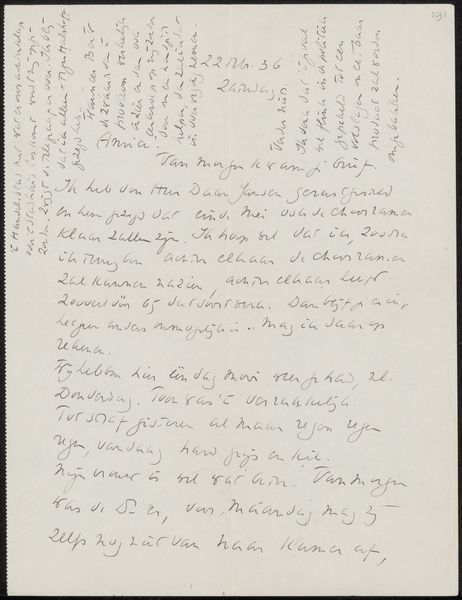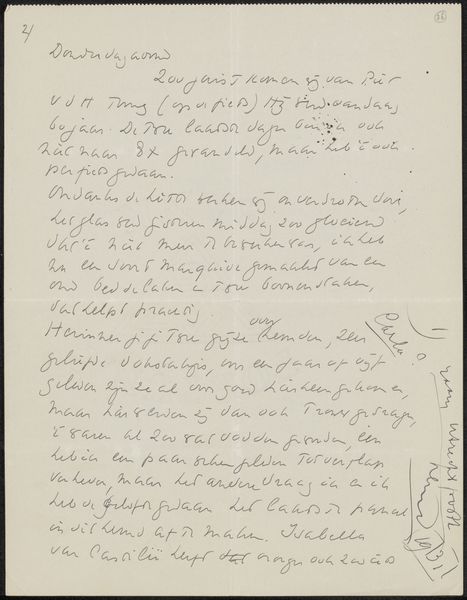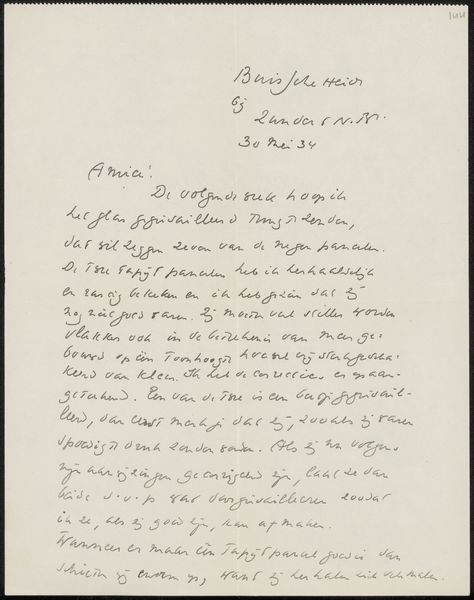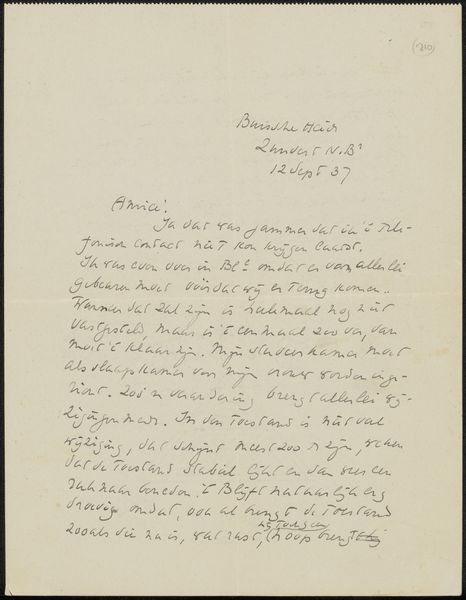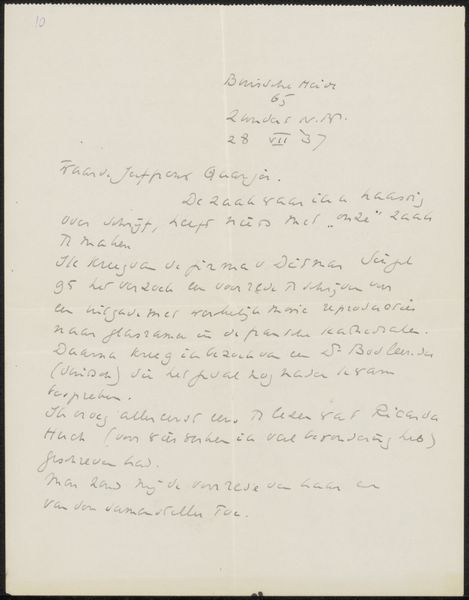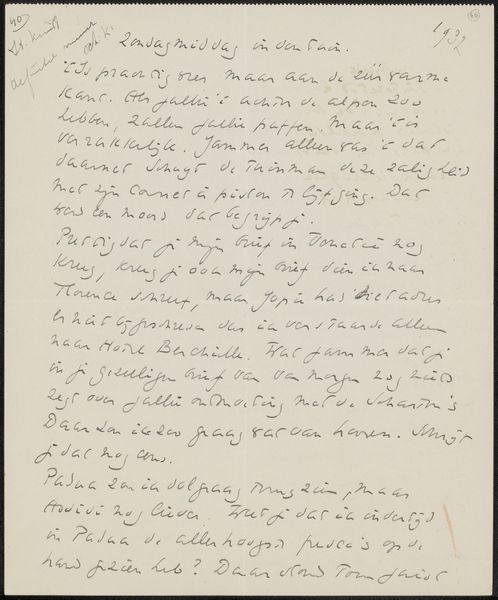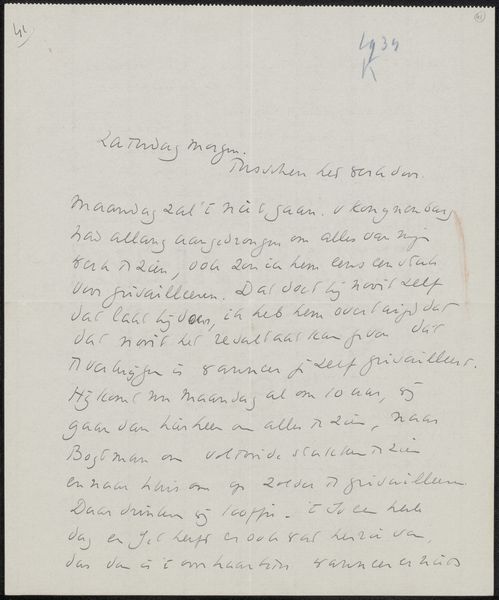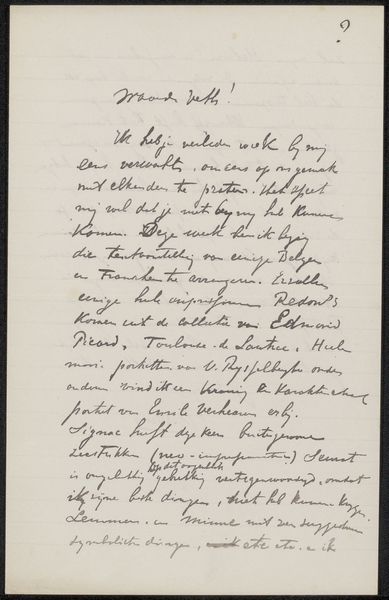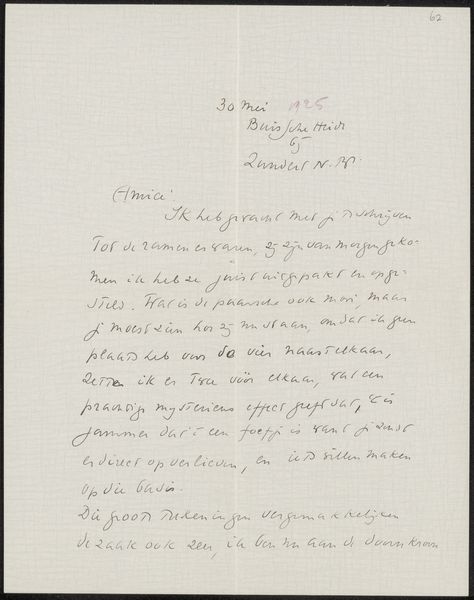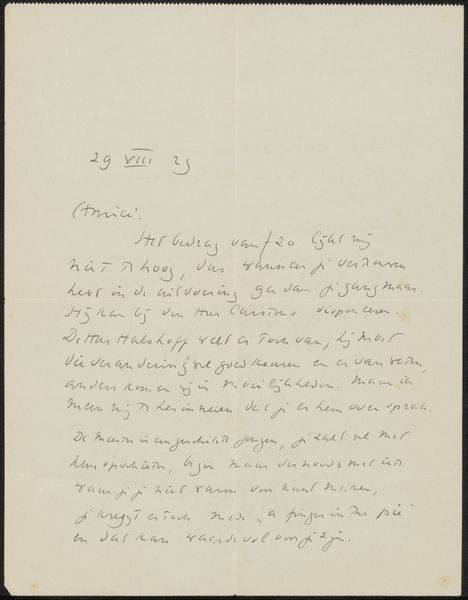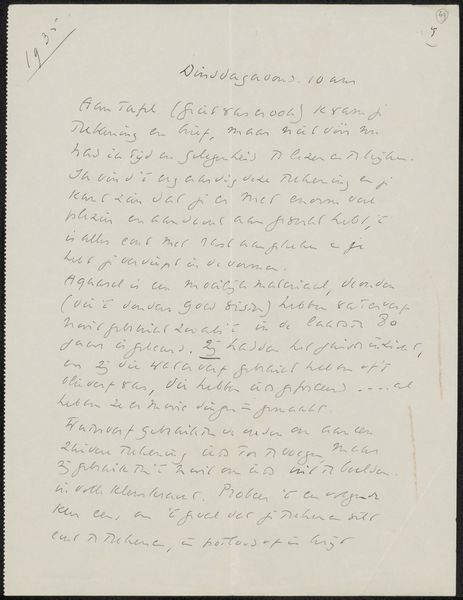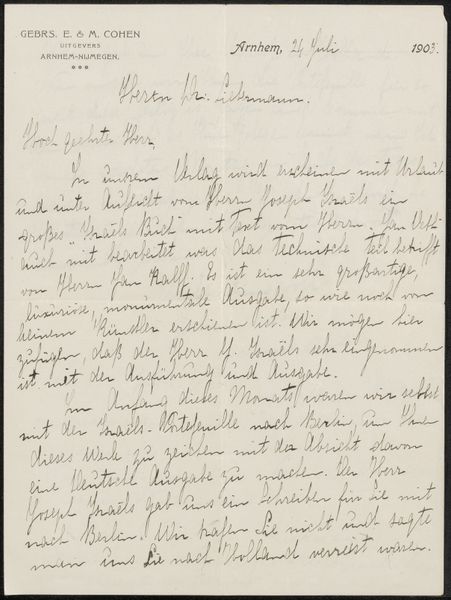
#
hand-lettering
#
ink paper printed
#
old engraving style
#
hand drawn type
#
personal sketchbook
#
hand-drawn typeface
#
ink colored
#
pen work
#
sketchbook drawing
#
coloring book page
Copyright: Rijks Museum: Open Domain
Curator: Let's turn our attention to this rather unusual piece: "Brief aan Ina van Eibergen Santhagens-Waller" by Richard Nicolaüs Roland Holst, created in 1936. It’s currently held at the Rijksmuseum. Editor: My initial feeling is somber. It feels intimate, private almost, a glimpse into a world of thoughtful contemplation. The density of the handwriting makes it feel weighty. Curator: It’s more than just handwriting. Look at the hand-lettering, almost a hand-drawn typeface. This letter is a potent expression of Holst’s political views and, importantly, the sociopolitical climate of the 1930s. We need to ask what this letter reveals about resistance and communication during that time. Editor: You're right, there's a distinct aesthetic to it, that echoes styles reminiscent of old engravings, combined with elements of a personal sketchbook. All these swirling pen marks hold a certain visual poetry, creating layers of meaning through the act of inscription. One senses a world where visual rhetoric really matters. Curator: Exactly! Think about it as a carefully crafted missive. Even the very act of personal correspondence carries weight within historical structures of power and privilege. This wasn't just a note; it was an articulation of a world view against the backdrop of rising fascism. Editor: There's a melancholic beauty here. The ink on paper embodies human thoughts and intentions distilled into visible symbols. One can imagine the emotional resonance this letter held. The overall impression reflects the vulnerability inherent in human communication but also its lasting cultural and historical presence. Curator: It speaks volumes, even now, about the artist’s resistance and solidarity with figures like Ina. By looking closer, we unlock how these individuals navigate a changing world in relation to both interpersonal politics and much wider systems of societal shift. Editor: This work offers a rare opportunity to consider communication and the preservation of culture within the written image. It invites reflection on those past lives intertwined in a shared destiny and leaves one feeling contemplative long after one moves on to the next piece. Curator: Indeed, this single page gives us an introspective look into the convergence of art, political engagement, and the delicate nuances of a relationship amidst historical shifts.
Comments
No comments
Be the first to comment and join the conversation on the ultimate creative platform.
